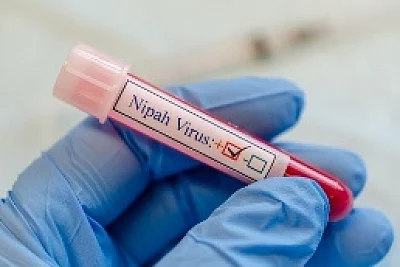Nipah vaccine trials begin as India battles virus outbreak in Kerala
Two vaccine candidates are entering human trials amid promising drug therapies

India is once again facing an outbreak of the deadly Nipah virus in the southern state of Kerala. The resurgence of the bat-borne virus has intensified global efforts to develop a vaccine.
Two vaccine candidates are entering human trials in Bangladesh, and promising drug therapies are in development, according to Gavi, the vaccine alliance. Nipah has a fatality rate of up to 75 per cent, and the World Health Organisation (WHO) lists it as a priority pathogen due to its pandemic potential.
Even non-fatal cases can have lasting effects. In India, two patients from a previous outbreak remain in comas months after recovery.
Kerala has reported four recent cases, including two deaths, within a 50km radius along the Malappuram–Palakkad border. The state remains on high alert, with 675 people under observation across five districts.
Nipah is carried by fruit bats and spreads to humans through contact with contaminated food or water. Human-to-human transmission occurs via close contact, often through respiratory droplets. The infection typically begins with respiratory symptoms and can escalate quickly to seizures and fatal brain inflammation.
Though current case numbers are low, experts warn the risk is growing. Climate change is disrupting bat habitats, increasing human exposure across South and Southeast Asia — placing an estimated 2 billion people at risk.
Two vaccine against Nipah
Vaccine development is accelerating. The ChAdOx1 NipahB vaccine, developed at the University of Oxford, recently received PRIME status from the European Medicines Agency (EMA), a designation meant to fast-track regulatory approval. Early-stage trials have shown promising results in animals and preliminary human data.
“This designation is crucial to accelerating access if the vaccine proves effective,” said Professor Brian Angus, principal investigator of the Oxford trial, speaking to VaccinesWork.
The vaccine is backed by the Coalition for Epidemic Preparedness Innovations (CEPI), which is also supporting PHV02, another candidate set to begin Phase 2 trials in Bangladesh.
Monoclonal antibodies show promise for Nipah as an “immunological bridge,” offering immediate protection before vaccine-induced immunity develops, Dr. Nicole Lurie of CEPI told VaccinesWork.
A 2019 study in The New England Journal of Medicine cautioned that while past outbreaks have been limited, “larger, self-sustaining epidemics may occur if the virus becomes more transmissible.”
In 2022, the WHO officially listed Nipah as a top-priority pathogen, underscoring concerns that it could spark a future pandemic.
Network Links
GN StoreDownload our app
© Al Nisr Publishing LLC 2025. All rights reserved.